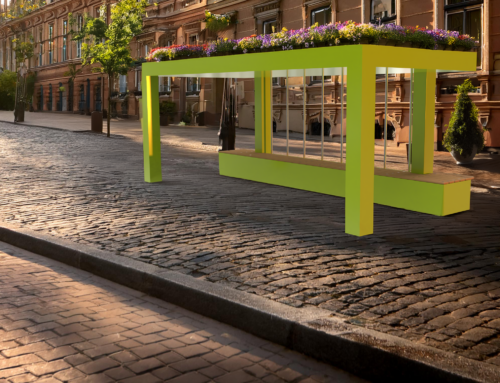Made in Germany wurde beliebt und begehrt im Amiland, zum einen wegen der technischen Qualität, zum anderen wegen des Designs. Das könnte nun für die dortigen Verbraucher teurer werden.
Die bisherigen Aussagen des zukünftigen Präsidenten lasen auf höhere Einfuhr-Zölle schließen. Ziel – klar, Produktion und damit Arbeitsplätze in die Staaten zu verlagern.
Einige deutsche Hersteller haben schon vorgebeugt und vor längerer Zeit Produktionsstätten in den US errichtet. Für andere Länder hat das auch schon funktioniert. Ein japanischer Motorrad Produzent hatte schon in den 80ern seine Produktion dorthin verlegt. Das war so erfolgreich, dass ein US stämmiger Hersteller Klage einreichte, weil angeblich Design und Klang(!) kopiert waren. Irgendwie hat man sich außergerichtlich geeinigt. In der Fabrik werden mittlerweile japanische Autos gebaut, der US Motorradhersteller hat derweilen mit Shitstorm in den sozialen Medien zu kämpfen, weil er die Produktion in Niedriglohnländer ausgelagert hat.
Was aber wäre, wenn Designleistung Made in Germany in die Staaten exportiert würde?
Die Verbindung deutscher Designkompetenz mit der Produktion in den USA bietet eine einzigartige Möglichkeit, Produkte zu schaffen, die sich durch Funktionalität, Qualität und Ästhetik auszeichnen. Durch die Nutzung dieser Stärken können Unternehmen nicht nur die Ansprüche der amerikanischen Verbraucher*innen übertreffen, sondern auch nachhaltigen Erfolg auf dem Markt sichern, oder?
Deutsches Produktdesign genießt weltweit einen exzellenten Ruf, insbesondere für seine Kombination aus Funktionalität, Qualität und Ästhetik. Diese Eigenschaften machen es zu einem wertvollen Ansatz, um Produkte für den amerikanischen Markt zu entwickeln – selbst dann, wenn diese Produkte direkt in den USA produziert werden…
1. Funktionalität und Präzision
Deutsches Design zeichnet sich durch eine klare, funktionale Ausrichtung aus. Produkte werden so gestaltet, dass sie den Nutzer*innen eine intuitive Bedienung ermöglichen und einen hohen praktischen Nutzen bieten. Diese Herangehensweise passt hervorragend zum amerikanischen Markt, auf dem Verbraucher*innen sowohl effiziente als auch langlebige Lösungen bevorzugen.
2. Hervorragendes Engineering
Die deutsche Designphilosophie integriert oft technische Exzellenz und innovative Ansätze, die eine hohe Qualität sicherstellen. Dies kann amerikanischen Herstellern helfen, ihre Produkte von Mitbewerbern abzuheben, indem sie Zuverlässigkeit und überlegene Leistung bieten – zwei Werte, die auch auf dem US-Markt geschätzt werden.
3. Zeitloses Design
Deutsches Produktdesign verfolgt häufig eine zeitlose Ästhetik, die nicht nur aktuellen Trends entspricht, sondern auch langfristig attraktiv bleibt. Dies ist besonders relevant für den amerikanischen Markt, wo Langlebigkeit und Wertigkeit zunehmend geschätzt werden. Produkte mit klarem, minimalistischem Design sprechen viele Zielgruppen an und sind ideal für unterschiedliche Konsumsektoren.
4. Nachhaltigkeit als Wettbewerbsvorteil
In Deutschland ist Nachhaltigkeit ein zentraler Bestandteil des Designs. Diese Philosophie kann dazu beitragen, Produkte für den amerikanischen Markt zu entwickeln, die ökologische Verantwortung mit innovativen Materialien und Prozessen verbinden. Da umweltfreundliche Produkte in den USA zunehmend gefragt sind, kann dieser Aspekt die Attraktivität und Marktfähigkeit erhöhen.
5. Kulturelle Differenzierung und Anpassungsfähigkeit
Während deutsches Design für seine universelle Anwendbarkeit bekannt ist, berücksichtigen deutsche Designer*innen häufig auch kulturelle Unterschiede. Bei der Entwicklung von Produkten für den amerikanischen Markt können Aspekte wie Bedienungsgewohnheiten, Farbpräferenzen oder regionale Vorlieben einbezogen werden. Dies führt zu Produkten, die sowohl international inspirierend als auch lokal relevant sind.
6. Wertschöpfung in der amerikanischen Produktion
Durch die Anwendung deutscher Designprinzipien können auch in den USA produzierte Produkte von optimierten Fertigungsprozessen profitieren. Der Fokus auf Effizienz und Qualität hilft, Produktionskosten zu senken und gleichzeitig die Endqualität zu steigern. Dies führt zu einem Wettbewerbsvorteil für amerikanische Hersteller, die hochwertige Produkte „Made in America“ anbieten möchten.









Hinterlasse einen Kommentar
Du musst angemeldet sein, um einen Kommentar schreiben zu können.